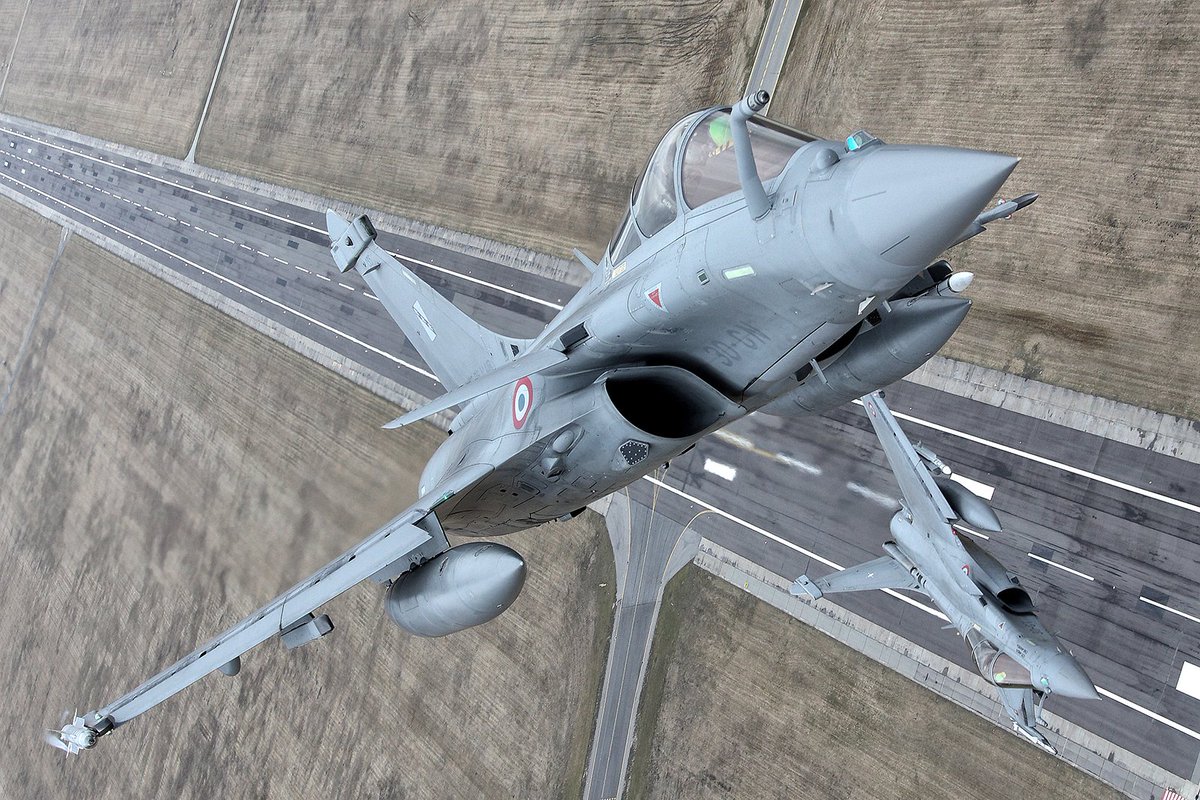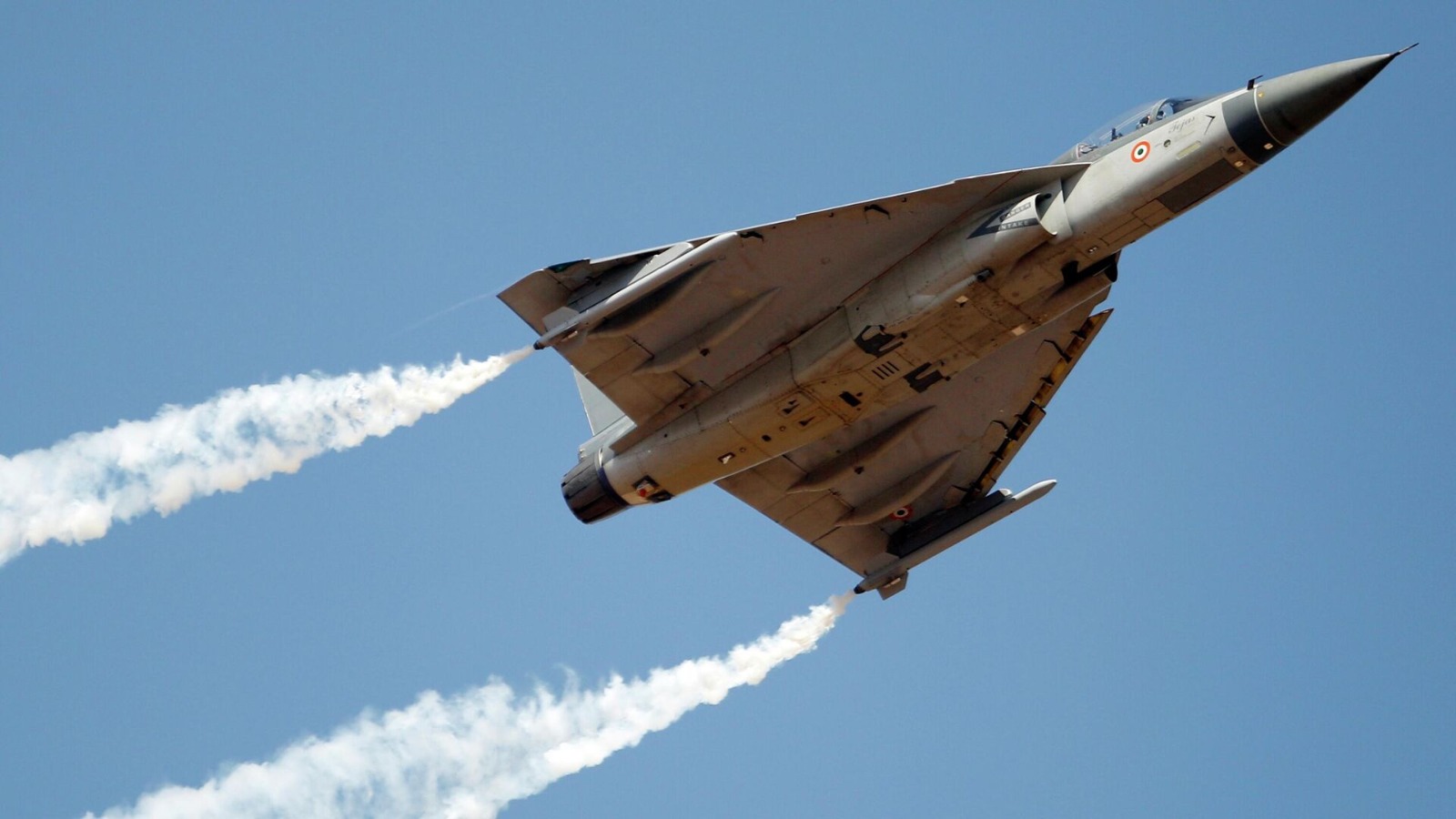In its latest assertive move along the Line of Actual Control (LAC) with India, China has deployed its J-10 Vigorous Dragon fighter jets just 300 km from an Indian base that is home to Rafale fighter jets.
While the deployment of the J-20 has been widely reported, the presence of the J-10 “Rafale Challenger” fighter jets has received less media attention. The J-10 is the only fighter jet deployed on either side of China’s border with Pakistan.
Pakistan has inducted and deployed these single-engine multirole fighter jets to counter the French Rafale fighter jets of the Indian Air Force (IAF). The question remains whether India’s two frontline fighter jets, the Rafale fighter and the LCA Tejas MK1A, can rise to the challenge of the vibrant Dragon.
As reported by the Eurasian Times, China is stationing these fighters, along with six J-20s, at China’s Shigatse Air Base, which is less than 300 kilometers from the Hasimara Air Base in West Bengal, where the Rafale fighter jets are based. Unlike China, India does not possess fifth-generation aircraft.
The satellite images of the Chinese fighter jets were released as India announced it would go ahead with a long-overdue deployment of a new army division to eastern Ladakh. Relations between the two countries have deteriorated since the Galwan clash in 2020, with Beijing arguing that the redeployment of 10,000 Indian Army troops would not contribute to peace and stability in the region.

With summer upon us in the Indian subcontinent, the Indian Army is gearing up for a possible Chinese aggression. During his visit to the United States, Indian Army Chief General Manoj Pande was provided with detailed and high-quality technical signals intelligence and satellite imagery on Chinese troop movements in Tibet and neighbouring provinces.
Despite the expectations and buildup, the Indian Air Force needs immediate strengthening to match the combined capabilities of its two neighbours. The induction of 36 Rafales was the first step in modernising the IAF’s ageing fleet and halting the decline in the number of fighter squadrons.
Since then, delivery of the LCA Tejas Mk1A has been postponed and there has been no movement on the acquisition of 114 medium fighter jets or additional Rafale fighter jets.
Pakistan has inducted the aircraft into its fighter fleet in response to India’s introduction of the French Rafale fighter jets. The aircraft is equipped with an indigenously manufactured AESA (Active Electronically Scanned Array) fire-control radar and is capable of all-weather operations. Its primary mission is air-to-air combat, but it can also perform attack missions.
The J-10 C is often compared to an improved version of America’s F-16 Fighting Falcon. Like the F-16, the J-10 boasts a highly agile and aerodynamically unstable airframe, but it is stabilised by a computer in its fly-by-wire flight control system.
Its capabilities include visual aerial warfare, precision air-to-ground attack, digital glass cockpit instruments, air-to-air refueling, electronic warfare and more.

J-10 vs Rafale
Air Marshal (retd) Anil Chopra, a former IAF fighter test pilot and director, Centre for Air Power Studies, believes that comparing the J-10CE with the Rafale is “somewhat unfair” as the latter is a proven twin-engine fighter. The aircraft’s electronic warfare suite is unmatched.
“Both the J-10 and the Rafale can be described as 4.5 generation multirole fighter jets with similar performance and capabilities in some respects. However, the Rafale is clearly superior to the J-10 in terms of technology, weapons, aero-engines and combat experience,” said a senior IAF official.
Though both fighter jets are classified as 4.5 generation, the Rafale’s electronic warfare suite is among the best in the world.
“The Rafale has seen combat operations in Mali, Afghanistan, Libya, Iraq and Syria. The J-10 has at best only participated in joint exercises with Pakistan,” Air Marshal Chopra concluded while comparing the two fighter jets.

However, India has only 36 French-made fighter jets and only two enemy planes on each side of the eastern and western wings.
LCA Mk1A vs. J-10C
The situation is reversed if we compare the Vigorous Dragon with the latest indigenously built jet fighter, the LCA Mk1A. The IAF has bet big on this jet and has awarded a contract to Hindustan Aeronautics Aircraft Limited (HAL) to manufacture 83+97 of the jet.
There is a lot of buzz in the industry that the first aircraft of this variant is scheduled to be delivered to the IAF by February 3, 2024.
However, HAL has postponed the delivery of the fighter jets till mid-2024, citing disruptions in the global supply chain. The LCA Tejas Mk1A will replace the MiG-21 Bison aircraft. In other words, the Soviet-made fighter jets are awaiting delivery of the indigenous versions that will be phased out.
The Indian Air Force needs to maintain 42 squadrons to maintain combat balance with its neighbors, but that number has dwindled to 31 fighter squadrons, and will fall further if it phases out its MiG-21 fleet without replacements.
According to technical specifications, the J-10 is larger, heavier and has a higher top speed than the Tejas LCA, but the latter has better range and agility.
However, while the J-10C has already been deployed to China and Pakistan, the LCA Tejas Mk1A is still rolling off the assembly line.

MRFA is important for the IAF
Despite a strong push from the Indian Air Force, the government is sticking to its plan to buy 114 medium fighter jets from foreign manufacturers for an estimated $20 billion, emphasizing “Made in India.”
Though the IAF’s capabilities are improving, attention needs to be paid to combat endurance capability and strength of fighter and combat support platforms. The IAF’s overall deterrent capability has not kept pace with the existing threat perception.
Air Marshal Anil Khosla, a former vice commander of the Indian Air Force, told the Eurasian Times that while the indigenous Tejas aircraft is easy to build, “we need a new generation of multi-role aircraft to maintain a balanced force” (until the indigenous Tejas Mk II and advanced medium fighter aircraft are ready).
“The MRFA aircraft will need to be procured (probably in the next defense budget outlay). They will need to be procured in phases (probably two or three squadrons at a time) so that the expenditure can be spread over a period of time and better technology and capabilities can be acquired later,” Khosla added.
Despite the Indian government’s emphasis on “Make In India” to modernise its armed forces, the LCA Mk2 project is yet to receive funding from the government, meaning it remains a dream.

The Tejas Mk 2 is targeted at the Indian Air Force as a 4.5 generation medium weight fighter. It is planned to be an improved version of the Tejas Mk 1A. India’s Commission on Security Services (CCS) formally approved the project on September 1, 2022 to develop, flight test and certify the fighter. The approval amounted to $809.17 million.
However, the funding was tied to the US government’s approval for 100% transfer of engine technology to India.
The LCA Mk-2 will have increased range and endurance. The Mk-2 is 1,350 mm longer, has canards, and can carry a 6,500 kg payload compared to the LCA’s 3,500 kg. The LCA Mk-2 is powered by General Electric F414-INS6 engines (previous LCA versions used F404s).
The LCA Mk-2 is expected to have a maximum speed of Mach 1.8 and a service ceiling of 50,000 ft. Heavy armaments like SCALP class, Crystal Maze and Spice-2000 will also be integrated into the Mk-2. The IAF is expected to order over 200 LCA Mk-2 fighter aircraft.
- Ritu Sharma has been a journalist for over 10 years and writes on defence, foreign affairs and nuclear technology.
- The author can be contacted at ritu.sharma (at) mail.com.
- Follow EurAsian Times on Google News

